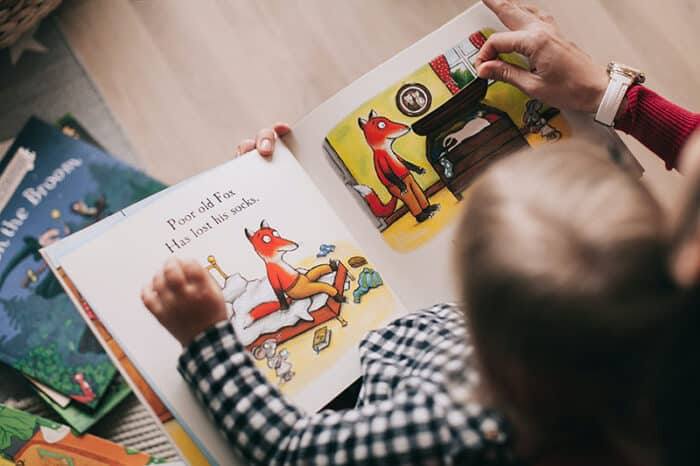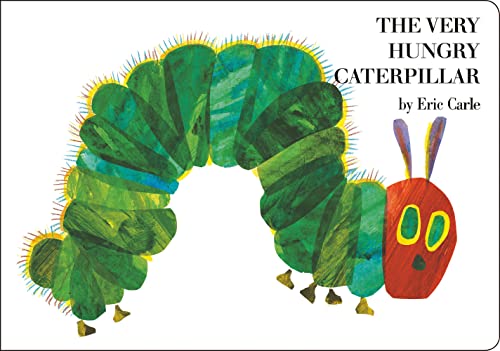Memories of cuddling with their young children at bedtime as they read them a story are among the highlights of parenthood for many moms and dads. But lots of parents let this sweet bonding time end when their child learns to read and become more independent.

They might still encourage their child to read before bed, but the parents are no longer a part of the routine. However, this time doesn’t just have to be a memory. Even independent readers benefit from time spent reading with a parent. And there’s no better time for this than bedtime.
1. It Maintains Your Bond
Quality time is so important, but it can be hard to find. Parents and kids both have commitments and busy schedules. Sharing time each night reading the same story provides an opportunity for parents and kids to bond. Together, they boo the bad guys and cheer on the heroes.

Reading together also allows parents a unique perspective on the inner workings of their child’s mind, as discussing the book and hearing a child’s thoughts on the plot and characters gives insight into how the child perceives the world.
2. It Improves Reading Skills
Older kids have more expectations placed upon them by parents and teachers. They are expected to become more fluent readers and be capable of reading more complex texts.
However, during the upper elementary and middle school years, the amount of reading instruction, particularly one-on-one time with an adult, decreases right as they are expected to make big leaps in their reading comprehension and vocabulary fluency skills.

Parents who spend time each night reading more complex texts to their child allow the child time and space to absorb new vocabulary words and have discussions that will increase their reading comprehension skills.
3. It Imparts New Perspectives
Parents absolutely should read to their older children. However, they should also spend time each night discussing the book with their child. Having a conversation about the book being read gives kids a low-stress way to practice analyzing and commenting on what they read.

It’s also a good idea to point out particularly good writing or things about the book that the parent really likes. Kids will learn how to appreciate good writing and how to articulate their own feelings and thoughts about books when their parents model these behaviors.
Six Tips to Establish a Read-Aloud Routine
What if parents have already let bedtime reading cease being a part of their kid’s daily schedule? Not all kids love reading, so many parents will be dealing with reluctant readers who aren’t excited about giving up part of their evening free time to reintroduce story time.
Luckily, there are steps parents can take that can convince even the most reluctant of readers to embrace shared reading.
1. Reintroduce Shared Reading Gradually
Don’t push for an every-night story time at first. Try every other night. Also, don’t forget that kids still need some independent reading time. Letting them read for ten minutes or so by themselves before joining them gives kids the best of both worlds.
Other families read together on some nights before bedtime and have independent reading time on other nights.
2. Take Turns Narrating
Switch off reading out loud with the child. They’ll get exposed to a better reader’s patterns and fluency when reading, but they also get to practice reading more complex vocabulary out loud in a safe space.
3. Choose Books With Companion Movies or Streaming Series
One easy way to get a reluctant reader hooked on a book is by choosing one that has a corresponding movie or television show.
Some kids will do better watching the movie before reading the book, while other kids will prefer reading the book before seeing the story on screen; try both approaches to see which works better for you.
4. Don’t Limit Reading to Bedtime
A good bedtime routine is key for kids of all ages. However, don’t just tie books to bedtime. Some kids prefer reading in the mornings or after school.
Keep a good supply of reading material in the house, and work with the child’s natural rhythms. Encourage reading at all times!
5. Switch Up the Material
Some parents believe that graphic novels don’t count as reading. They absolutely do. So do news articles, blog posts, and kid-friendly magazines.
Exposing kids to a wide variety of writing styles and reading materials helps them build fluency and discover what they love to read, which will encourage their development into lifelong readers.
6. Reread Their Favorites (Even if They’re Picture Books)
Kids of all ages love hearing their favorite stories over and over again. Parents and teachers push kids to try new, more challenging material. However, kids get a lot out of rereading a favorite, even if it’s one that’s now far below their current reading level.

So grab that old favorite when asked and let the whole family be transported to a simpler time!
Reading Practice for All Ages
- 12 of the Best Books to Help You Sleep Soundly: Kids aren’t the only ones who benefit from a good bedtime reading routine.
- Staff Picks: What We’re Reading Before Bed: From classics to biographies, the pickiest adult readers should be able to find something to read on this list.
- Best Bedtime Books for Kids: Classics like Charlotte’s Web are still beloved by today’s children.
- Top Ten Children’s Books to Encourage Healthy Bedtime Routines: Books like Goodnight, Goodnight, Construction Site are written in a soothing rhythm that helps kids relax.
- 16 Bedtime Books to Lull Your Little One to Sleep: These books are short and soothing, making them perfect for bedtime.
- Awesome Bedtime Books for Babies: Even infants benefit from story time before bed.
- What Are the Benefits of Reading in Bed? One benefit of reading in bed is reduced stress.
- 14 Ways to Encourage Your Grade-Schooler to Read: Reading books over and over helps establish the reading habit in children.
- How to Raise a Reader: Raising a reader starts off with reading to newborns.
- Encouraging Your Child to Read: Reading to a child for about 30 minutes a day helps them become lifelong readers.
- How to Encourage Your Children to Read at Home: Kids who grow up in homes where books are readily available become better readers.
- Creating a Reader-Friendly Home: Having access to kid-friendly magazines and audiobooks can help children become better readers.
- Ten Ways for Parents to Encourage Their Child to Read: One study showed that students who love to read also tend to do better in math than students who don’t enjoy reading.
- 18 Genius Ways to Make Kids Love Reading: Kids and adults both love reading a book and then watching a movie or television show based on the story they just read.
- The Ultimate Backseat Bookshelf: 100 Must-Reads for Kids 9-14: Older teens and adults will love the books on this list just as much as tweens will!
- 50 Books All Kids Should Read Before They’re 12: Graphic novels are one way to hook reluctant readers.
- Classic Children’s Books All Kids Should Read: Where the Sidewalk Ends is the perfect poetry book to read at bedtime.
- The 100 Best Children’s Books of All Time: Generations of kids have enjoyed having Where the Wild Things Are read to them at bedtime.
- 33 Children’s Books Literally Everyone Should Read: Adults who never read these books as kids should add these titles to their to-be-read pile.
- 67 Books Every Geek Should Read to Their Kids Before Age 10: Parents love sharing their interests with their children, and books are one avenue to do that.
- 50 Books Every Kid Should Read: Books like Green Eggs and Ham are classics for a reason.
- 100 Best Books of All Time: Adults looking for new bedtime reads should check out this wide-ranging list.
- 50 Classic Books Everyone Should Read in Their Lifetime: Some of these books, like A Tree Grows in Brooklyn, are considered young adult novels but are considered classics that everyone should read.
- 25 Books Everyone Should Read, According to TED Speakers: These books are endorsed by a wide variety of TED speakers.



